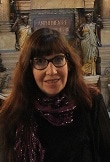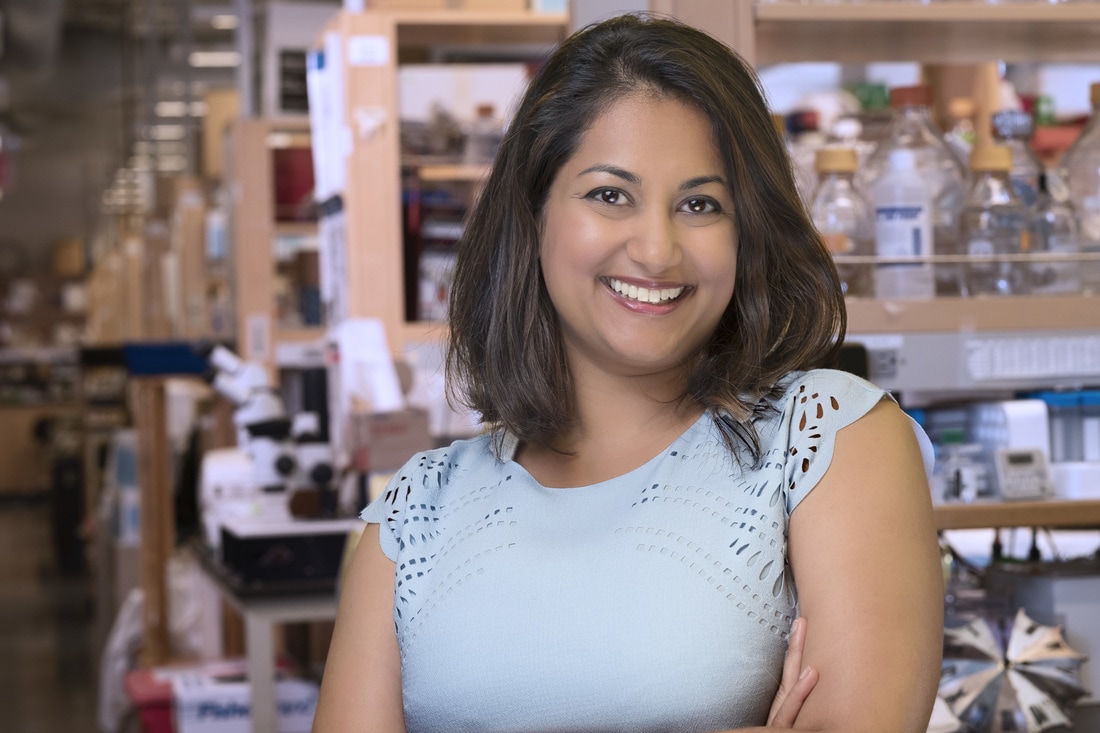|
By Robbin Koenig
Dr. Shruti Naik is an immunologist and postdoctorate researcher at the Fuchs lab at Rockefeller University. She is one of the five recipients of the 2016 L’Oreal USA for Women in Science Fellowship. As a major advocate for women in STEM careers, Dr. Naik was a featured speaker at the 2017 Scientista Symposium. Dr. Naik’s work focuses on combating inflammatory skin disorders, such as psoriasis and eczema, with adult stem cell treatments. Her research will ultimately contribute to a new approach for treatment. She describes her research in the following question and answer dialog. RK: Can you explain your current research at Rockefeller University? SN: All of our bodies’ tissues, skin, lungs, guts, liver, etc, are maintained by pools of adult tissue stem cells. These cells sustain us in health and disease. Yet, our understanding of how adult stem cells are affected by disease and in particular, inflammatory disease, is very limited. A vast majority of research in this arena has focused on understanding how these cells function in healthy tissues. I am an immunologist by training and thus was very interested in knowing how adult tissue stem cells respond to inflammation. In particular, I am studying the interaction between stem cells and immune cells in the context of skin inflammatory conditions with the long-term goal of using stem cell based therapies to treat these diseases. We find that in a range of inflammatory conditions and cancers, immune cells localize in close apposition to tissue stem cells and exert their influence on these cells to drive disease. If we can inhibit and reverse these effects of immune cells on adult stem cells, it may be possible to develop new and more effective treatment strategies for these devastating diseases. RK: What inspired your interest in immunology and skin diseases? SN: The immune system is a unique organ that inhabits all of our tissues and it guards against invasive entities and noxious agents. When unchecked, immune cells can also inflict damage in the absence of extraneous agents. The skin is the body’s largest organ and thus, its largest environmental interface. As such, it is home to a constellation of immune cells and is routinely subjected to a range of inflammatory reactions. I was drawn to understanding how immune cells function in the skin, how immune reactions go awry, and how these cells drive pathology. RK: Finding an alternative to traditional treatments, such as anti-inflammatories and steroids must be very exciting for an immunologist. How promising is stem cell therapy at this point? SN: We are still in the very early stages of understanding the molecular factors that alter adult stem cells during skin inflammation. Using cultured stem cells in the presence of inflammatory molecules and then mouse models of disease, we are interfering with defined pathways within stem cells to see if we can reverse the effects of immune mediators. There is a lot more work to be done, but even these early studies are quite exciting because they represent a new paradigm in the treatment of inflammatory diseases. RK: What is a typical workday like for you, if you even have a typical workday? SN: I don’t really have a typical workday, which is wonderful because I don’t think I could ever work a standard 9-5 job. Science is more of a lifestyle than a job. I come into lab to do experiments at the bench at all times of the day based on the study. I get to mentor graduate students in the lab with their work. I also write a lot of grants, manuscripts, and op-eds. I have the opportunity to share my work with scientists across the world and get their feedback on my studies. In fact, I just returned from a conference in Italy where I gave a talk about my work and was able to speak with and learn from scientists from across the globe. Communication, both written and oral, is a key part of science. We are part of the global scientific enterprise and the only way to move your work forward is to constantly engage in a dialogue with your community. So, I would say the lion’s share of my “work” focuses on this aspect. RK: What is the most rewarding aspect about being a research scientist? SN: Discovery. At the end of the day finding something new about a biological process is the greatest reward. No award, manuscript, or any other accolade can make up for this. RK: What are some of the biggest challenges? SN: There is a lot of failure in science. It’s not personal. It’s just the nature of research. When you are testing a hypothesis, there is a high chance that you will be wrong and that’s o.k. because you learn something interesting even when you are wrong. I would say being resilient in the face of routine failure is the most important thing to learn. When Dr. Naik is not focusing on her research, she works as a tireless supporter of women working in science. Several women influenced her decision to pursue a career path, which could lead to improving the quality of life of millions people who suffer from inflammatory skin disorders. To continue the cycle of role modeling, Dr. Naik employs several different avenues to inspire young women interested in STEM. This includes developing the Women in Science at Rockefeller program, a network connecting younger female graduate students with established experienced women scientists. Dr. Naik discusses her own mentors and the need to encourage future generations of women to enter scientific fields. She is also concerned with retaining talented scientists and creating working environments that are conducive for women. She offers several solutions. RK: Who were some of your role models? SN: I have been very fortunate to have fantastic role models in my life. My mother, an immigrant and a single parent, raised my brother and me while working two jobs. She succeeded to run an entire information technology department. My graduate and postdoctoral mentors, Drs. Yasmine Belkaid, Julie Segre, and Elaine Fuchs, who are incredible scientists at the forefront of their fields, have all set a high bar for me to meet. All of these women have shown me that with dedication and perseverance there is nothing you cannot achieve. RK: Can you describe your role as a supporter of female scientists and how you would encourage young women to pursue careers in science? SN: I think there are two issues that need to be approached here. One is to encourage young women to pursue science and the other, an equally important issue, is to support them to stay in science. For the former, I often speak at middle and high schools about my work, host students for short stays in the lab, and participate in outreach days at my research institute. I believe early and positive exposures to the scientific enterprise are keys to having more girls enter the pipeline. In terms of having women stay in science, reducing attrition is one of the most important issues to combat gender imbalance. I believe providing childcare support in the form of day care subsidies and technical assistance for primary childcare givers can help offset the demands of family life. Unconscious bias training and gender-balanced hiring committees will enable equal career advancement of female trainees. Travel and career development awards for women will help to promote networking, gain exposure, and cultivate advocates. These are changes that have to occur at the institutional level and by building organizations. If we advocate for these changes for women in science, we can start to balance the gender scales. RK: How was your experience at the 2017 symposium? SN: The symposium was wonderful. I found the young women to be very inquisitive and interactive. Moreover, the caliber of research posters was outstanding and the speaker presentations were very encouraging. I think the symposium is fantastic way to encourage young women to continue in science and provide them with a network to tap into for support. 
About the Author
Robbin Koenig, M.A., M.S. is an educator with an avid interest in technology and science education. She has taught students in prekindergarten through high school. Robbin enjoys volunteer work, exploring the N.Y.C. cultural arts scene, and anything pertaining to wildlife. Comments? Leave them below!
1 Comment
Karan Singh
12/14/2018 05:28:26 pm
Dear Dr. Shruti, thanks for sharing all this information to the public, your knowledge and enthusiasm of doing science will encourage youg minds for the future discovery in science which will cope the major scientific problems.
Reply
Your comment will be posted after it is approved.
Leave a Reply. |
CONNECT WITH USSUBSCRIBE |
The Scientista Foundation, Inc. All Rights Reserved © 2011-2021 | Based in NY | [email protected]
The Network for Pre-Professional Women in Science and Engineering
The Scientista Foundation is a registered 501(c)(3) -- Donate!
The Network for Pre-Professional Women in Science and Engineering
The Scientista Foundation is a registered 501(c)(3) -- Donate!



 RSS Feed
RSS Feed